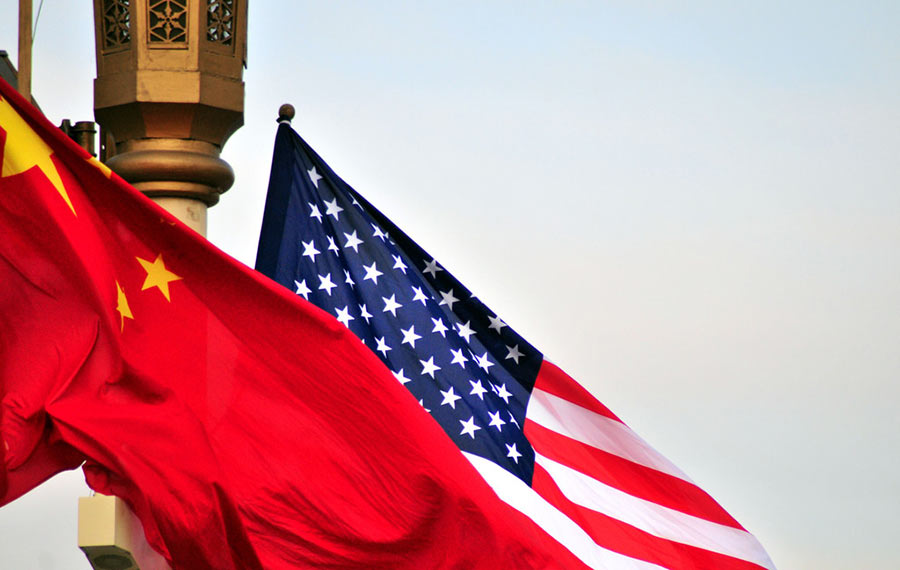从日美贸易摩擦看中美贸易发展趋势 How Can China Endure the Trade War?
中美聚焦网 2018-10-29 15:51


当前,中美贸易摩擦愈演愈烈,美方对中方输美商品加征关税的范围从500亿美元增加到2500亿美元,并威胁要扩大到全部输美中国商品。日前,美国副总统彭斯又发表讲话,指责中国的社会经济发展模式。中美贸易摩擦正由贸易领域向整个中美经济关系乃至政治军事关系延伸。中美贸易摩擦将走向何处,将如何影响中美关系未来长远的发展,值得我们认真观察。与中美贸易摩擦类似,从1968年到1996年,日美贸易摩擦持续了近30年。对照日美贸易摩擦进程,对中美贸易摩擦的发展趋势我们会得出一些方向性启示。
China-US trade tensions are intensifying, and the US threatens to ratchet up the pressure by imposing $200 billion tariffs on Chinese imports. A few weeks ago, Vice President Pence lashed out at China's development model in his speech, which was widely interpreted as a sign that the ongoing trade tensions would extend into the political and military arenas. It is a question on every one's mind — Where are China-US trade relations heading? In the years from 1968 to 1996, the trade war between the US and Japan went on for 30 years. It may well shed light on the China-US trade dispute.
日美贸易摩擦进程呈现阶段性特征,其间就日本输美商品有六次大的交锋,每次持续两年到六年不等。从1968年到1985年,日美围绕具有竞争优势的日本输美商品有过四次大的交锋,每次围绕单一行业商品进行谈判,交锋时间保持在两年左右。这一阶段,只要日本哪个产业发展快了,构成对美国产业的竞争威胁,就会成为美国的攻击目标。双方逐次围绕纺织品、钢铁产品、彩电、汽车展开贸易攻防战,交锋的结果是签订了一系列有利于美国的行业性生产和进出口管制协议。进入80年代中期后,第三次工业革命浪潮推动日本的电子产业科技开始全面赶超美国,美日之间的贸易摩擦从单一行业向多元行业领域扩展。1985年至1991年,日美围绕半导体、大型计算机和电信通讯业展开长达六年的谈判,两次签订日美半导体协议和四个市场协议,并达成日元升值的“广场协议”和扩大开放日本内需市场的前川报告。从1989年到1996年,日美进一步就市场结构性障碍问题,如排他性政府采购、金融和其他市场管制、知识产权保护、非关税壁垒等签订了结构性改革协议、保险协议和全面经济改革协议等。将近30年的日美贸易摩擦并没有拯救日薄西山的美国弱势产业,却极大地改变了日本产业的发展模式,日本由此加速走上产业全球化的发展道路,通过海外投资并购整合全球资源发展自己的产业,日本对外最大的十项并购都发生在2000年前后。
The trade war between the US and Japan escalated in different phases. Six confrontations lasting 2-6 years took place during the whole period. Whenever an industry began to emerge in Japan, or threatened to overtake its US peer, it would be subject to US trade sanctions. Over these years, Japanese exports like textiles, steel, TV, and cars were subjected to trade sanctions by the US, culminating in an array of agreements on production and export restrictions. In the late 1980s, the third industrial revolution swept the world, and Japan began to leapfrog over the US on all fronts, which ignited a full-blown trade war between the two countries. From 1985 to 1991, the US and Japan were entangled in six years of negotiations covering fields like semiconductors, super computers, and telecommunications, and signed a series of agreements, including two on semiconductors and four on market access, with the most notable ones being the Plaza treaty and the Maekawa report. From 1989 to 1996, the two countries signed agreements on structural reform, insurance, and comprehensive economic reform to address market access impediments. The decades-long trade war failed to reverse the decline in US industries but it did reshape Japan's development model, accelerate its supply chain development, and bolster its global mergers and acquisitions. The top 10 M&A cases all took place after 2000.
由此可见,两个大经济体发生贸易摩擦是有一个过程的,解决之道是由点到面,依据双边经济发展态势,分阶段从解决单一行业竞争,到对整体市场经济关系逐次进行调整。而中美贸易摩擦却似乎采取了跳跃式发展的节奏,这是中美经济关系的密切性和特殊性所决定的。自中国2000年加入WTO以来,对外经济交往日益密切,中国以自己的人力、土地和资源低成本优势与美国为主的西方国家形成紧密的优势互补的全球产业分工格局,推动了全球经济的复苏和发展。因此,过去中美之间虽然在光伏、轮胎等产品上有过争议,但双方都认为中美在双边贸易中是双赢,美方认为中国是美国日益重要的市场,中国在遵守国际贸易准则方面虽不完美但进步很大,双方很快在一些具体的贸易问题上达成协议。但特朗普当选执政以来秉承“美国优先”的原则,推动降低美国的贸易逆差并吸引制造业回流,而中国作为美国的第一大贸易逆差来源国和世界发展最快的、最重要的制造业大国,自然成了特朗普的贸易保护主义首要打击的对象。特朗普一改以往的从单个行业入手逐次开展贸易战的做法,直接挑战中国的经济发展模式、市场开放模式和产业政策,试图迫使中国全盘接受美国的贸易政策主张,这令中国政府完全无法认同美国政府的观点。中国的经济发展模式和相关产业政策是依据中国经济的实际发展阶段和市场结构特点内生而成的,存在着不足,但主体是适应中国经济发展要求的。对不足之处的改革始终在推进中,但不可能一蹴而就。美国逼中国签城下之盟的目标难以达到。事实上,与中国产业链高度结合的美国经济本身也没有做好与中国经济即刻分道扬镳的准备。因此,在美国中期选举后,中美双方还是要找到阶段性缓解双边贸易摩擦的办法。届时双边的关税战不会结束,但会有所缓解,达成一些中间性的协议,以稳定市场预期。
The trade war the US is initiating against China seems to be escalating much faster than the one it initiated against Japan. This is due to the extent of China-US economic relations. Since China's accession to the WTO in 2000, its external economic engagements have substantially increased, thanks to China's comparative advantages in labor, land, and resources, which contributed to economic recovery from the global crisis. Though China and the US have had their share of trade disputes in the past regarding photovoltaic and tire imports, the US recognized China as an important market which has made great strides in compliance with international trade laws. The Trump administration pursues the America First policy, and made reducing the trade deficit a prime target. Not surprising that China, as the fastest growing manufacturing power, and the largest source of the US trade deficit, has been bearing the brunt of protectionism-driven trade policies. What's more, the US is challenging the development model, market opening and industrial policies of China, with the ultimate goal of making China accept US trade policies, which is not acceptable to the Chinese government. China's development model and industrial policies are tailored to its development stage and market structure. Though it is not above improvement, it is being constantly refined, which is a process rather than an event. It is wishful thinking that the US can impose change on China, as China's industrial chain is highly integrated with the global chain and the US can ill-afford to disengage with China. After the mid-term elections, both sides should seriously strive to turn trade relations around. Though the tariffs are not likely to end, some initial improvement or stopgap measures could stabilize markets a bit.
未来源于中美结构性矛盾的经贸争端不会停止,美国将在三个方向上对中国施加战略性压力。第一是全面孤立中国的国际经贸环境。美墨加协议针对第三国的市场经济身份限制条款还会复制到美国与其他主要经济体的相关协议上去,同时美国还会联合其他西方盟友推动主导改革WTO等国际经济组织,为中国参与国际经济活动设置高门槛。第二是美国将加强对中国高科技技术引进的封锁。美国会严格审核中国企业在美投资并购活动,并联合其他西方国家加强对中国高科技发展的限制。第三是美国会在中美文化教育科技交流以及事关中国核心利益的敏感战略问题上不时敲打中国,以施加压力。中国未来也必然会在以下三个方面积极作为,以对冲化解外部压力。首先是加大投入,加强自主科技研发,为中国产业竞争力的持续发展提供可靠的技术基础和动力。其次是通过扩大国内市场开放和深化“一带一路”建设扩大中国的对外经济交往,扩容中国与世界各国的自由贸易“大家庭”。再次是努力提升国内人民的生活水平,通过降税增加国民个人收入并支持中小企业发展,吸引国际国内投资,扩大中国内需市场,对冲外部市场的局部收缩。
Part of the trade disputes stem from structural trade issues between the two countries. The US may continue to ratchet up pressure on China for strategic reasons. First, it aim to isolate China in the global trade system. The USMCA enshrines a “poison pill” provision on exclusion of “non-market economies”, which may well be replicated in other trade agreements. The US may also reach out to other allies to advance WTO reform. Second, the US may tighten scrutiny on hi-tech exports to China. Chinese investment and merger activities in the US would be put under scrutiny, and America may even rally its western allies to do the same. Third, the US may hinder cultural and education exchanges and continue to gain leverage over China on its core interests.China may employ the following strategies. First, China will invest more in independent research and development to make its industries more competitive. Second, it could further open up its domestic market and promote the Belt and Road Initiative to empower external economic engagement and deeper integration into the global trade network. Third, it could deliver a better life for the Chinese people, continue to reduce taxes to support small and medium enterprises, attract more foreign investment, and tap domestic market potential to offset the impact of external shocks.
作者:钟焰,中信改革发展研究院战略与国际学部资深研究员
(来源:中美聚焦网,编辑:Helen)

















 英语点津微信
英语点津微信 双语小程序
双语小程序